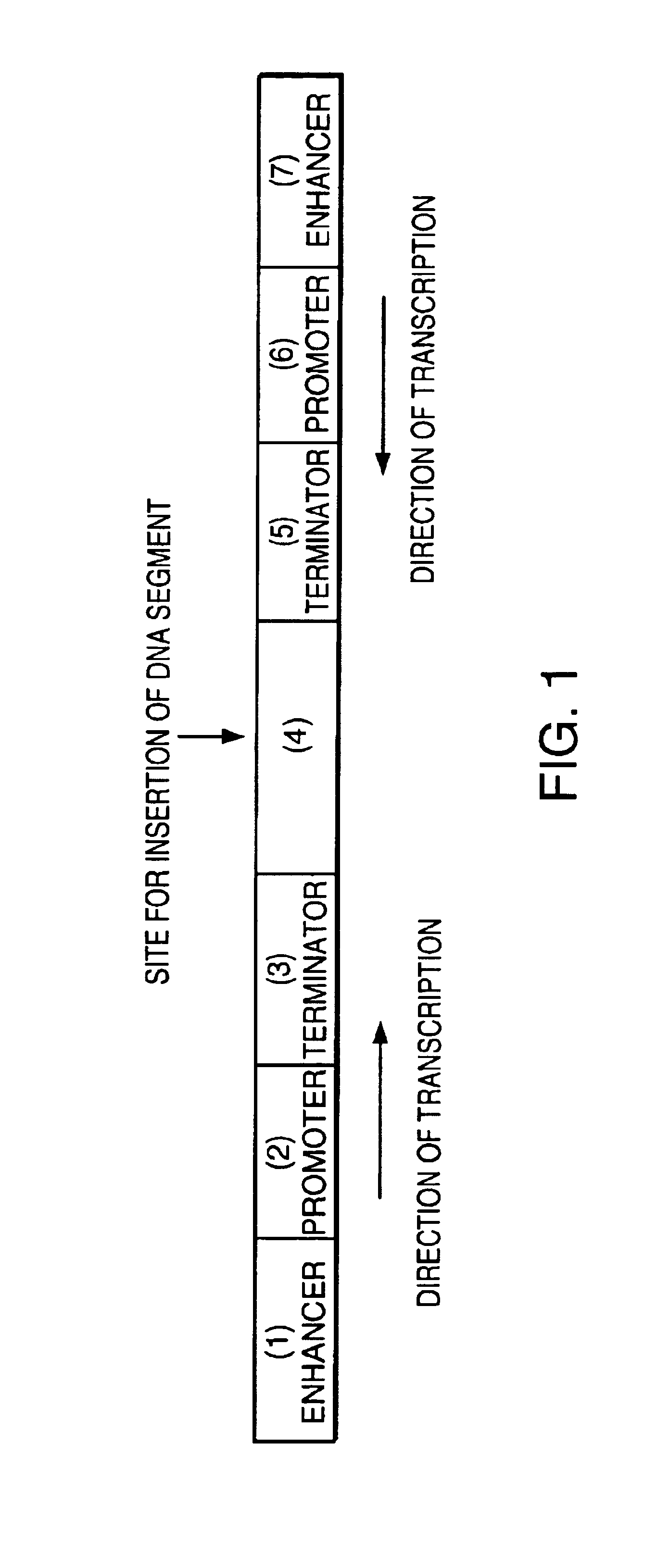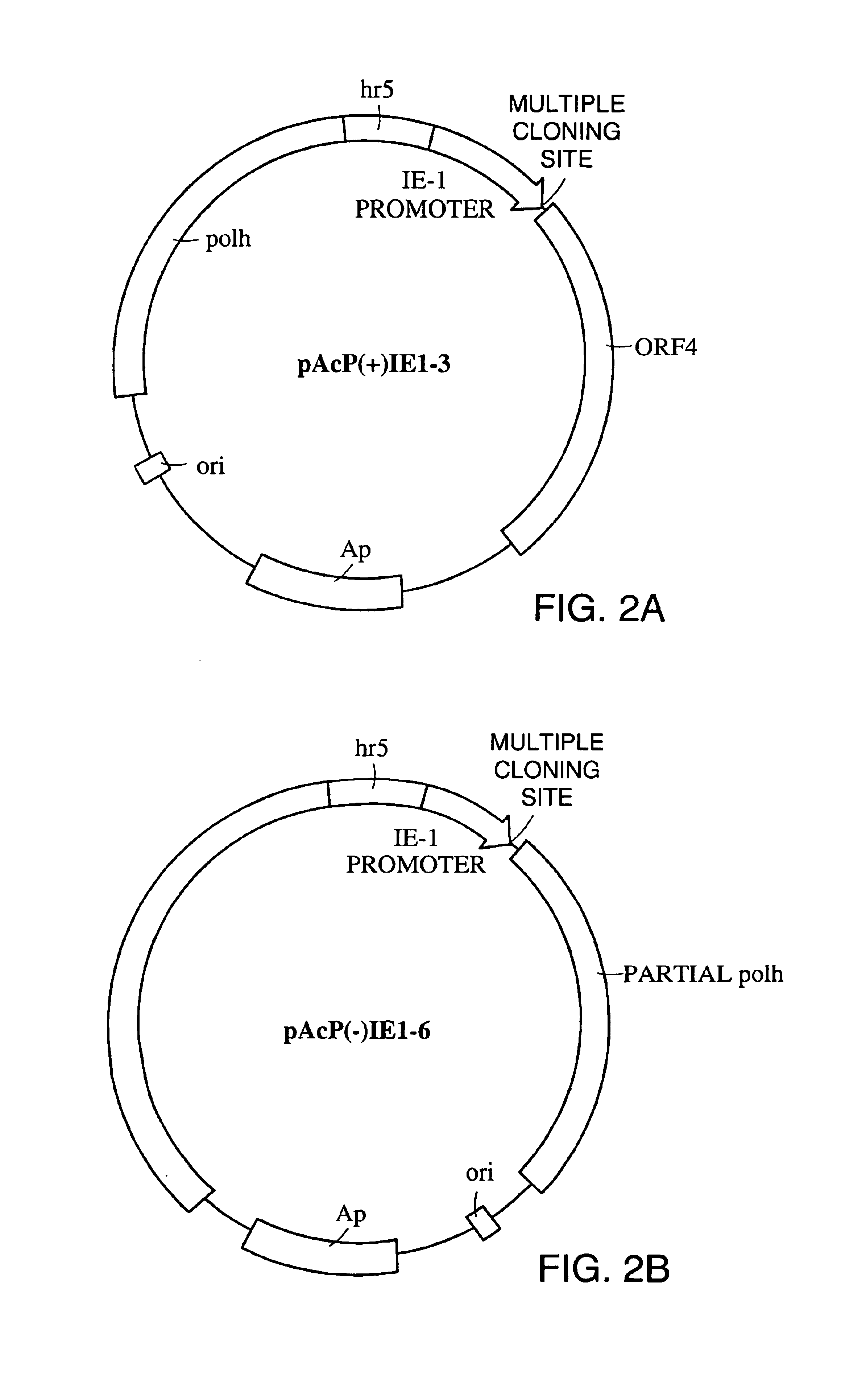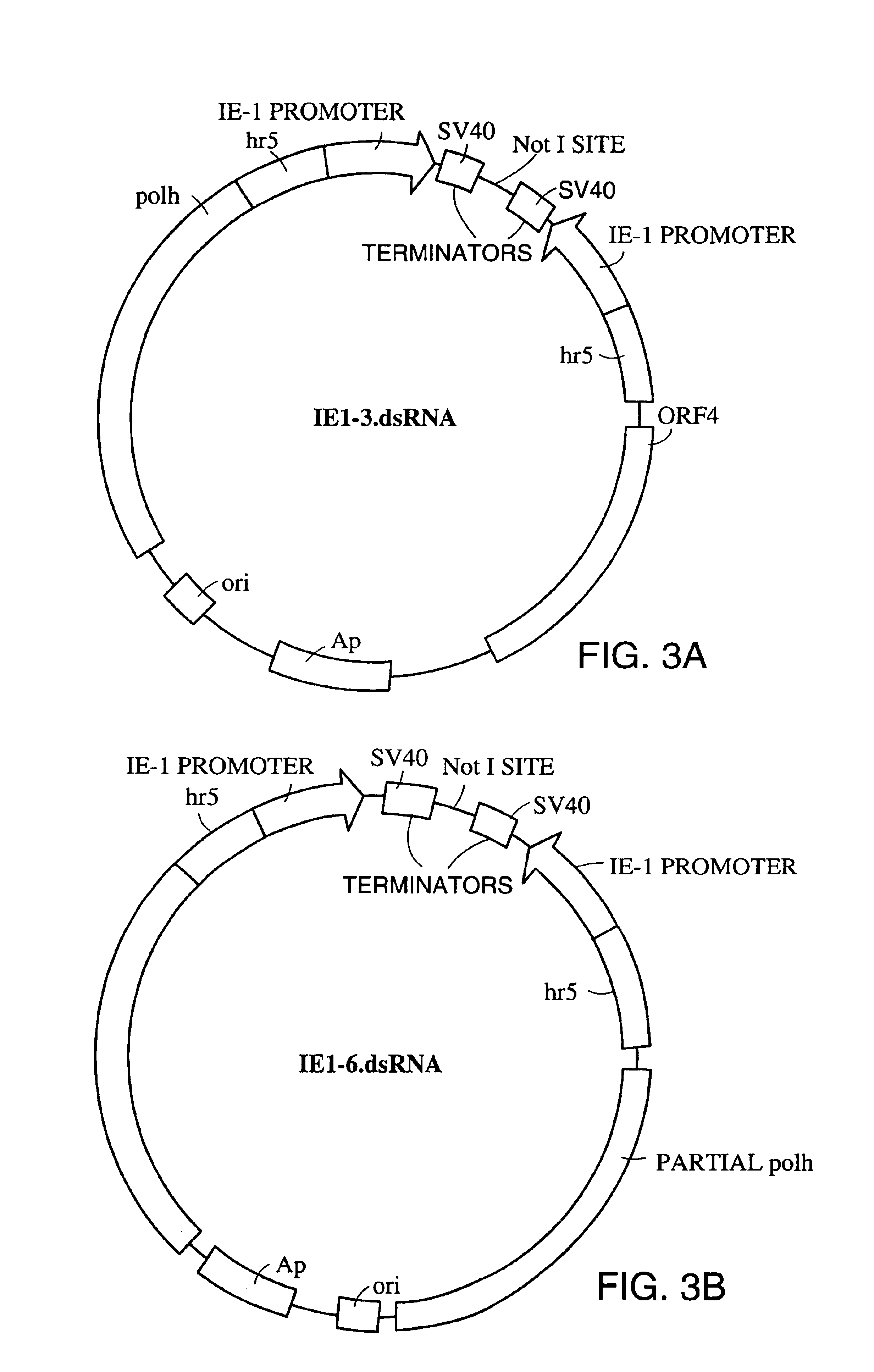Insect control agent
- Summary
- Abstract
- Description
- Claims
- Application Information
AI Technical Summary
Benefits of technology
Problems solved by technology
Method used
Image
Examples
example 1
Construction of Baculovirus Transfer Plasmids for Expression of dsRNA
[0127]Baculovirus transfer plasmids pAcP(+)IE1-3 and pAcP(−)IE1-6 were obtained from Novagen, Inc., 601 Science Drive, Madison, Wis., 53711. For cloning into pAcP(−)IE1-3, the SV40 transcriptional terminator (FIG. 7, SEQ ID NO:1) was amplified using the primers 5′-SV40Xba (SEQ ID NO:2) and 3′-SV40Sac (SEQ ID NO:3). The 5′ and 3′ primers contain an XbaI and a SacII restriction site respectively at their 5′ ends. The amplified fragment was subcloned into the XbaI and BamHI sites of pAcP(−)IE1-3 to create plasmid IE1-3-SV40. For cloning into pAcP(−)IE1-6, the SV40 transcriptional terminator was amplified using the primers 5′-SV40Xba (SEQ ID NO:2) and 3′-SV40Bam (SEQ ID NO:4). The 5′ and 3′ primers contain an XbaI and a BamHI restriction site respectively at their 5′ ends. The amplified fragment was subcloned into the XbaI and BamHI sites of pAcP(−)IE1-6 to create plasmid IE1-6-SV40.
[0128]Plasmids IE1-3-SV40 and IE1-6-...
example 2
Isolation of DNA Segments from Target Insect Genes
[0132]Preparation of cDNA Templates for Amplification of Target Genes
[0133]Total RNA was isolated from Drosophila and Manduca larvae and adults using a standard LiCl / urea precipitation protocol. Crude extracts were extracted with phenol / chloroform, using acidic phenol to extract DNA into the organic phase while leaving RNA in the aqueous phase. First strand cDNA synthesis was performed using the Superscript Preamplification System (Gibco BRL, Cat. 18089011, 1999).
[0134]Isolation of DNA Segments from Target Genes
[0135]Segments of DNA from the Drosophila para, white, vha55, and vha26 genes and the Manduca hb, EcR, fasciclinII, vha55, and vha26 genes were amplified from first strand cDNA by PCR using primers designed on the basis of sequences available in GenBank. Standard PCR amplification conditions were used. (Annealing: temperature=55 degrees C., time=45 sec; Extension: temperature=72 degrees C., time=50 sec; Denaturing: temperature...
example 3
Subcloning Target DNA Segments into dsRNA Baculovirus Transfer Plasmids
[0147]Segments of target Dm and Ms genes obtained as described above were subcloned into the vector pHSS7, which contains a multiple cloning site flanked by NotI restriction sites, allowing inserts to be easily removed as NotI fragments. NotI fragments containing each DNA segment were then subcloned into the NotI site of modified baculovirus transfer plasmids IE1-3.dsRNA and IE1-6.dsRNA described in Example 1. For clarity, transfer plasmids and the recombinant baculoviruses derived from them are referred to by the name of the gene of which they contain a segment and the species from which the gene was obtained. For example, the term “Dm para transfer plasmid” refers to a transfer plasmid constructed as described herein so as to direct synthesis of dsRNA, i.e., containing a segment of the Dm para gene and flanking genetic control elements. The term “Dm para BV” refers to a recombinant baculovirus derived from a Dm...
PUM
| Property | Measurement | Unit |
|---|---|---|
| Time | aaaaa | aaaaa |
| Biological properties | aaaaa | aaaaa |
Abstract
Description
Claims
Application Information
 Login to View More
Login to View More - R&D
- Intellectual Property
- Life Sciences
- Materials
- Tech Scout
- Unparalleled Data Quality
- Higher Quality Content
- 60% Fewer Hallucinations
Browse by: Latest US Patents, China's latest patents, Technical Efficacy Thesaurus, Application Domain, Technology Topic, Popular Technical Reports.
© 2025 PatSnap. All rights reserved.Legal|Privacy policy|Modern Slavery Act Transparency Statement|Sitemap|About US| Contact US: help@patsnap.com



